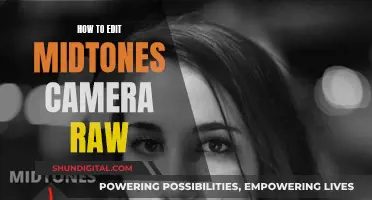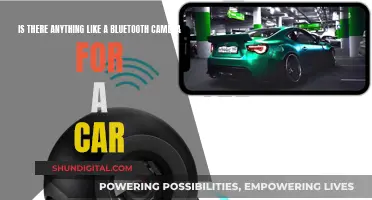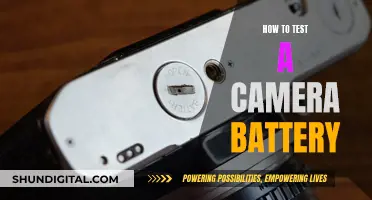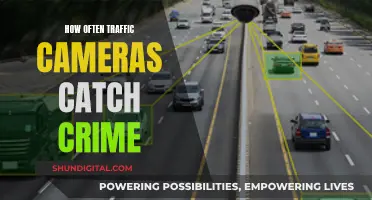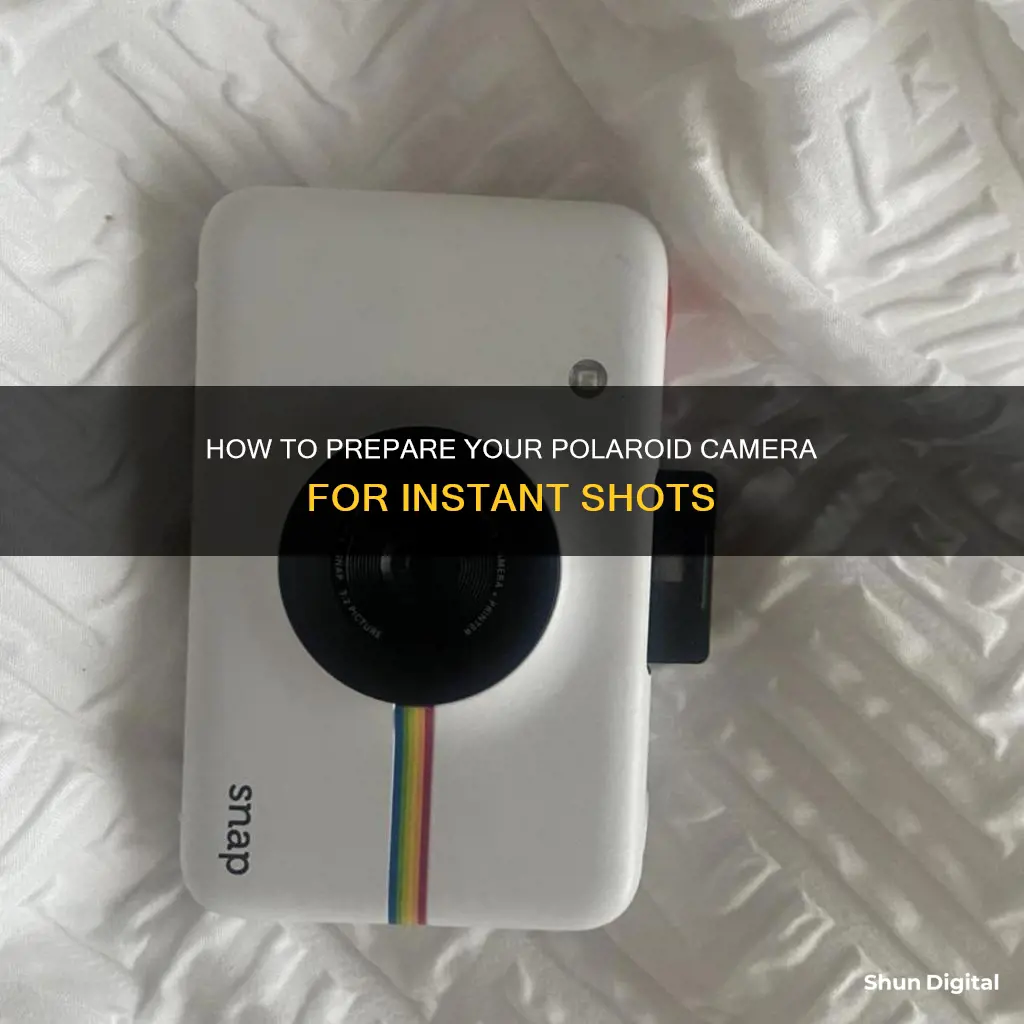
Polaroid cameras, such as the Polaroid Now and the OneStep 2, need to be charged before first use. The OneStep 2 will not be fully charged upon purchase, and the same may be true for other Polaroid cameras. To charge a Polaroid camera, you need to plug the USB charging cable into the camera's back panel and connect the other end to a power source, such as a smartphone adapter or a computer's USB slot. A fully charged OneStep 2 will have enough power to shoot 15-20 packs of film, depending on usage. It is important to remember to turn off the camera after each use to conserve battery life.
| Characteristics | Values |
|---|---|
| Charging method | Plug the USB charging cable into the Micro-USB slot on the camera’s back panel, and the other end of the cable into a charger (5v, 1A min), such as a smartphone adapter or your computer’s USB slot |
| Charging time | 2 hours through a wall socket with a smartphone adapter, or up to 4 hours through a computer’s USB slot |
| Battery states | LED Blinking Green (Battery High), LED Blinking Orange (Battery Medium), LED Blinking Red (No charge remaining) |
| Battery check | Switch the camera off, then switch it back on while holding down the self-timer button |
What You'll Learn
- The Polaroid OneStep 2 will not be fully charged upon purchase
- The camera has 3 battery states: high, medium, and no charge remaining
- The camera will not operate if there is no charge remaining
- The camera should be turned off after every use to conserve battery life
- The camera's battery can be charged using a smartphone adapter or a computer's USB slot

The Polaroid OneStep 2 will not be fully charged upon purchase
The Polaroid OneStep 2 is an instant camera that provides photos in just a few moments. However, it is important to note that the camera will not be fully charged upon purchase. Here are some key points to remember regarding this:
- Before using your Polaroid OneStep 2 for the first time, ensure it is fully charged. This is crucial as it can affect the camera's battery life and performance.
- To charge the camera, use the provided USB charging cable. Plug it into the Micro-USB slot on the back panel of the camera, and connect the other end to a charger (5v, 1A min), such as a smartphone adapter or a computer's USB slot.
- A full charge typically takes about 2 hours through a wall socket and up to 4 hours through a computer USB slot.
- The camera has three battery status indicators: LED Blinking Green (high battery), LED Blinking Orange (medium battery), and LED Blinking Red (no charge remaining). Keep an eye on these indicators to know when to recharge.
- Remember to turn off the camera after each use to conserve battery life.
- If your camera is not charging, try a different charger or cable. Ensure you are using the correct type of cable, such as a standard Micro USB, and check for any damage to the charging port or cable.
By following these instructions and keeping your Polaroid OneStep 2 fully charged, you can ensure optimal performance and enjoy capturing moments with your instant camera.
Are PTZ Cameras Electrically Charged?
You may want to see also

The camera has 3 battery states: high, medium, and no charge remaining
The Polaroid Now and OneStep 2 cameras have three battery states: high, medium, and no charge remaining. These are indicated by the camera's flash charge LED light. When the camera is plugged in and charging, the LED will be solid red. When the camera is fully charged, the LED will turn off.
When the camera is in the high battery state, the LED will be blinking green. This means there is enough charge for at least 15-20 packs of film, depending on usage. The LED will blink green while charging between shots and will be solid green when ready to shoot.
The medium battery state is indicated by an LED blinking orange. This means there is enough charge for about 1 pack of film. The LED will blink orange while charging between shots and will be solid orange when ready to shoot.
If the LED is blinking red, this indicates that there is no charge remaining. The camera will not operate until it is recharged.
It is important to note that the Polaroid camera should be fully charged before its first use. A full charge usually takes about 2 hours through a wall socket with a smartphone adapter or a USB charging adapter. Remember to turn off the camera after use to conserve battery life.
Charging Your Coolpix Camera: A Step-by-Step Guide
You may want to see also

The camera will not operate if there is no charge remaining
The Polaroid camera will not function if there is no charge remaining. The camera's flash charge LED light will blink red to indicate that there is no charge left, and the camera will not turn on until it is recharged. Therefore, it is important to ensure that the camera is fully charged before its first use.
To charge a Polaroid camera, use the USB charging cable provided and plug it into the Micro-USB slot on the camera's back panel. Plug the other end of the cable into a 5v, 1A min charger, such as a smartphone adapter or a USB slot on your computer. The camera will be fully charged when the red flash charge LED turns off. A full charge usually takes about 2 hours through a wall socket and up to 4 hours through a computer USB slot.
It is important to note that the camera should be turned off after every use to conserve battery life. Additionally, the camera's battery has three states: high, medium, and no charge remaining. When the battery is high, the LED light will blink green, indicating that there is enough charge for at least 15-20 packs of film. When the battery is in medium state, the LED light will blink orange, indicating that there is enough charge for about 1 pack of film.
If you want to check the camera's charge at any time, switch it off and then back on while holding down the self-timer button. The film counter LEDs on top of the camera will indicate the remaining battery life. For example, if 6 LEDs light up, it means the camera has a 75% charge remaining.
The Ultimate Camera Companion: DE-A93 Battery Charger
You may want to see also

The camera should be turned off after every use to conserve battery life
When it comes to conserving the battery life of your Polaroid camera, it is important to turn it off after every use. This is because, even when not in use, the camera continues to draw power from the battery, leading to reduced battery life.
Polaroid cameras, such as the Polaroid Now and the OneStep 2, have lithium-ion batteries. These batteries slowly self-discharge over time, even when the camera is switched off. This is a natural process and is due to the chemical composition of the battery. The rate of self-discharge depends on the temperature, with higher temperatures leading to faster self-discharge. Therefore, it is advisable to store your camera at room temperature or lower to slow down this process.
By turning off the camera when not in use, you minimise the amount of power being drawn from the battery, which helps to extend the battery life. This is especially important if you plan on not using the camera for an extended period. For example, if you are storing the camera for a few weeks or months, turning it off ensures that the battery retains its charge for when you need it next.
Additionally, turning off your Polaroid camera after each use also helps to provide an accurate reading of the battery level. The camera's battery gauge uses the upper and lower cutoff voltages to determine the remaining battery life. By turning the camera off, you allow the device to intelligently guess the remaining charge more accurately, as it has the reference points of the battery being empty and fully charged.
In summary, turning off your Polaroid camera after every use is a simple yet effective way to conserve battery life. It helps to reduce unnecessary power consumption, slows down the natural self-discharge process, and ensures that your battery gauge provides an accurate reading of the remaining charge.
Charging Your Fujifilm Camera: A Step-by-Step Guide
You may want to see also

The camera's battery can be charged using a smartphone adapter or a computer's USB slot
The Polaroid Now and OneStep 2 cameras are both rechargeable. The Polaroid Now comes with a charging cable in the box, which you can use to charge the camera via a smartphone adapter or a computer's USB slot. The OneStep 2 does not come with a charger, but you can use any smartphone adapter or USB slot to charge it.
To charge the Polaroid Now or OneStep 2, plug the USB charging cable into the Micro-USB slot on the camera's back panel. Then, plug the other end of the cable into a charger (5v, 1A min) or your computer's USB slot. The red flash charge LED will turn off when the battery is fully charged. A full charge usually takes about 2 hours through a wall socket with a smartphone adapter, or up to 4 hours through a computer's USB slot.
It is important to note that the OneStep 2 will not be fully charged upon purchase, so you will need to make sure you fully charge it before the first use. While charging, the flash charge LED will be solid red, and it will turn off once the camera is fully charged. The camera has three battery states indicated by the camera's flash charge LED light:
- LED Blinking Green: Battery High. There is enough charge for at least 15-20 packs of film, depending on usage. The flash LED will blink green while charging between shots and will be solid green when ready to shoot.
- LED Blinking Orange: Battery Medium. There is enough charge for about 1 pack of film. The flash LED will blink orange while charging between shots and will be solid orange when ready to shoot.
- LED Blinking Red: No charge remaining. The flash LED will blink red, and the camera will cease to operate until it is recharged.
To check the camera's charge at any time, switch the camera off, then switch it back on while holding down the self-timer button. The film counter LEDs on top of the camera will light up, indicating how much battery remains. For example, if 6 LEDs light up, the camera has a 6/8 (75%) charge remaining. Once you release the self-timer button, the LEDs will return to displaying the number of shots remaining in your film pack.
Simplisafe Camera Battery: Charging Time Explained
You may want to see also
Frequently asked questions
When the camera is plugged in and charging, the flash charge LED will be solid red. Once the camera is fully charged, the LED will turn off.
Charging a Polaroid camera usually takes about 2 hours through a wall socket with a smartphone adapter, or up to 4 hours through a computer's USB slot.
Yes, it is important to charge your Polaroid camera fully before its first use.



